As you know, a blender is one of the most important tools in the kitchen. Most of us enjoy quick, easy, and healthy snacks. This includes delicious smoothies, natural fruit, nut butters, soups, ice cream, and much more.
While a blender is highly convenient, it is very loud and noisy. You are wondering why would someone want to reduce blender noise. For me, I have three young kids and it is impossible to blend early in the morning or late at night without waking them up. Maybe you have a baby, young kids, pets, or roommates. Whatever the reason, a noisy blender is irritating and disturbs the quiet atmosphere of a room.
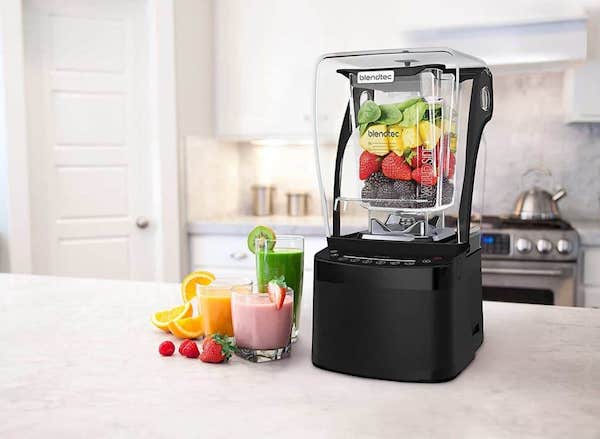
My initial mistake: I didn’t plan for the future or even consider a quiet blender when I bought my new, powerful yet very loud blender. Similar to many, I’m stuck with a new blender as loud as a cannon or artillery shells. No joke, I wear ear protection muffs when blending.
My Quest for Making a Blender Quiter
So, I decided to finally do something about it after the blending noise woke up my 3-month old from his nap. My wife wanted to replace it and buy the world’s quietest blender. But to be honest, I don’t want to shell out $800 for a new blender. I am perfectly satisfied with my blender’s power and how it blends – the only exception is the blender’s noise level. The blender is very loud.

I went on a mission to find the best ways to make a blender quiet and reduce blender noise. I decided to go on a journey and research this topic to find a solution. At least reduce the noise that the blender is making to a manageable level. So I don’t have to wear ear protection.
Here are a few things that you can do if you have a loud blender problem and how you can reduce blender noise. At the end of this article I will tell you which I chose for the time being.
How to Reduce Blender Noise
There are plenty of ways that you can reduce your blender’s noise level. Your housemates, toddlers, spouse, and pets will thank you. These things to make your blender quieter range from cheap to affordable to expensive.

However, I want to lay out all of the options. Thus, you can decide what works best for your specific situation and bank account. Feel free to combine several of these options!
- Move your blender away from walls
- Place a towel, rubber mat, silicon mat under your blender
- Wrap a towel around the blender
- Find or make a plastic sound enclosure for your blender
- Soundproof areas around the blender
- Use a cardboard box
- Blend in a pantry area or away from people
- Get a less powerful blender
- Use ear protection
- Buy a high-end quiet blender
1. Move your blender away from walls
First and easiest is consider where to put your blender in the kitchen. Sound echoes and bounces off walls. Imagine talking in a megaphone. Your voice is amplified by the megaphone walls.
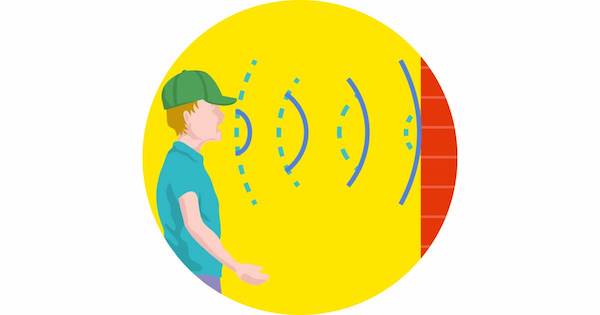
Just like a megaphone, if a blender is in a corner surrounded by walls or close to walls, the noise will increase a lot. When it is close to the wall, the sound that blender makes bounces off the walls and sounds louder than it really is.
If this is your situation, simply move the blender when in use to a spot far away from walls like a kitchen island. This is usually in the center of a kitchen away from walls. If you don’t like to keep the blender on the kitchen island or in the center of your kitchen, you can simply move it back to where it goes when you are done blending.
Try this first as it is simple, practical, and costs nothing.
2. Place a towel, rubber mat, silicon mat under your blender
Alternatively, this is another practical yet simple solution. It is in-expensive and doesn’t take a lot of time or effort. In fact, you can try it as an experiment to see if it works well. If you already have a towel or mat, use it. There is no need to buy a new one.
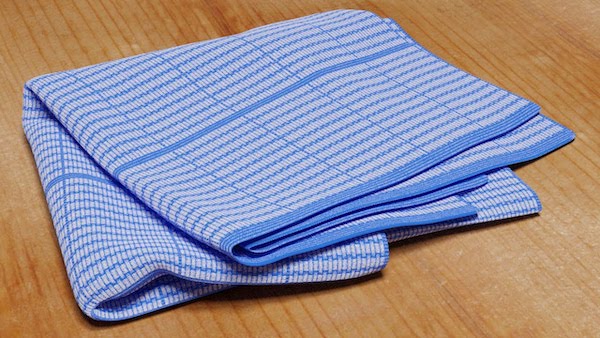
Simply take the towel or mat (rubber or silicon will work fine) and place the blender on top of it. The soft towel or mat under the blender will reduce the blender noise.
Similar to walls, blenders sit on countertops made of hard surfaces. Like the wall, the blender noise will vibrate and amplify from the hard countertop surface. Placing a towel or mat reduces that noise making your blender quieter.
A towel is something that every kitchen has. However, a rubber or silicone mat may require a small purchase – although very affordable.
3. Wrap a towel around the blender
Another practical way to make your blender quieter is to wrap a towel around it. Again, this requires no money, little resources, and easy to test.
Find any towel that is large enough. Simply wrap it around your blender either before blending or immediately after you push a button.
The towel acts as a soundproof enclosure without actually having an actual one. It absorbs the blender noise. Thereby dampening the sound from the blender making it quieter.
Definitely give this a chance as it can be done with things you already have in the house.
4. Find or make a sound enclosure for your blender
Next, either create or buy a sound enclosure for your blender. This requires more time, effort, and resources whether you buy it or make it.
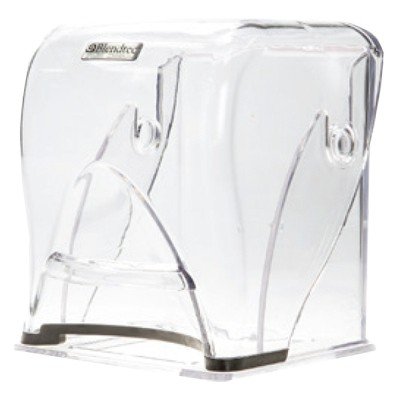
Make Enclosure
Are you a handy person, good with tools and making things? If the answer is yes, try making your own enclosure. Use plastic, wood, or other material to make a box and line it with a thick padded material to absorb the sound. However, make sure your enclosure is bigger than the blender and a space to access the blender controls.
Buy Enclosure
If you don’t have time or knowledge to make an enclosure, you can buy one. Before you buy a blender enclosure, make sure to look at the dimensions and material. You don’t want to get one that is too small or made of material that won’t reduce the noise a lot. There are some blenders that have specific enclosures made for them and others won’t work.
5. Soundproof areas around the blender
Maybe you have a small kitchen without an island or place to put the blender away from walls. If this is your situation, another way to reduce blender noise is to soundproof the walls where the blender is used.
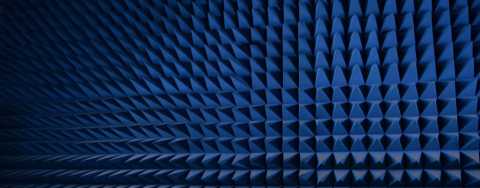
This is more expensive, time consuming, and may not look as nice. You can place soundproofing material like foam or boards the walls where your blender is used. The soundproof material absorbs the blender noise. Thus making your blender quieter.
6. Use a cardboard box
Similar to making or buying an enclosure, you can simply use an old cardboard box. This option is practical, budget friendly, and easy.
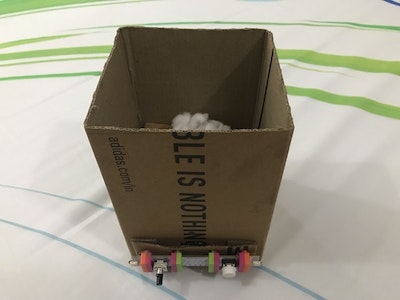
Simply find a box that is slightly larger than your blender. Feel free to cut and make your own cardboard box with duct tape and staples. Be creative and have fun with it. Decorate the enclosure to make it yours and pleasing to the eye.
One you have the box to the correct dimensions, line the inside of the box with some sort of padding (foam or some other soundproofing material). Pro tip is to use double sided tape. Use your newly made enclosure to place over the blender when in use. The enclosure dampens the blender noise and the lining inside the box absorbs the sound.
7. Blend in a pantry area or away from people
Another practical option is to simply blend in a different area. This option requires no resources or money and requires little effort. It may be a minor inconvenience.
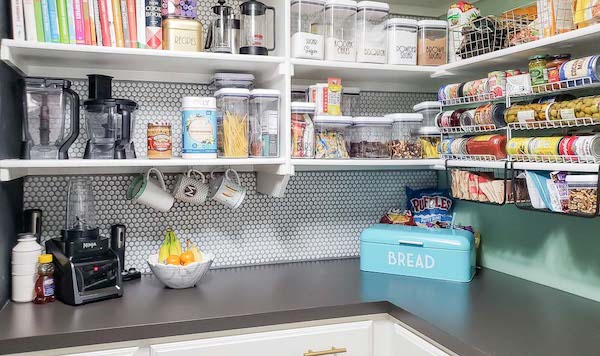
Find a room or location that has an outlet and away from people. The best location is one that has a door you can close. I go into my laundry room and shut the door sometimes. Once, I even went into the garage.
Alternatively, a popular option is creating a blending spot in a pantry. Especially if there is an outlet in there and it has a pocket door or door. This reduces the blender noise for others in the house.
8. Get a less powerful blender
Additionally, you can buy a less powerful blender. This costs money for something you already own but may be a worthwhile solution.
If you didn’t know, the main source of noise from your blender is the powerful motor. This creates a lot of blender noise. Therefore, the more powerful the blender the louder it is. A low cost, powerful blender will be especially loud. It is low cost because the manufacturer doesn’t spend extra money on noise reduction design or techniques.
Use the less powerful blender when you need to be more quiet and have less blender noise. Also, use your current blender when you don’t need to be as quiet and/or need more power for your blending needs.
9. Use ear protection
Yet another simple option is to use (or buy) ear protection. This is cheap, practical and easy solution. In fact, you probably already own ear muffs or ear buds.
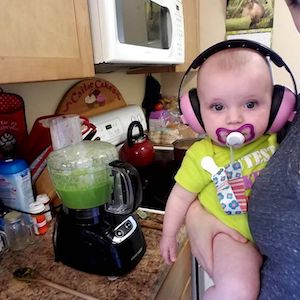
The only downside to this solution is it will only help reduce the blender noise for the person wearing the ear protection. If someone else is in the room without them, he or she will still experience the loud noise from the blender.
This is a great option if the blender noise bothers you personally. Simple construction ear muffs will work perfectly.
10. Buy a high-end quiet blender
Lastly, take the leap of faith and buy a high-end quiet blender. This is definitely the most expensive option. However, you can’t replace your ears but you can replace your loud blender.
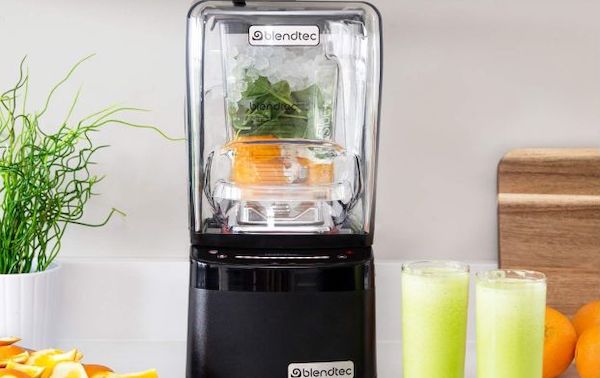
Remember, there is no such thing as a completely silent blender. The quietest blender will still make noise. Although, the blender noise level is very low. How low? Well you have a normal conversation with someone while blending.
Quiet blenders are more expensive. Manufacturers have higher costs for noise dampening material, sound enclosures, and other noise reduction techniques. Silent blenders are premium products and expect to pay more than a normal blender.
Here are a few quiet blenders, if you are interested:
- Vita – Mix Quite One blender – this blender is one of the most expensive but best quiet blender as far as I know
- Blendtec Pro 800 with WildSide Jar – known as the world’s quietest blender
- Hamilton Beach Professional Quiet Shield blender
Click here to read our detailed review of the best quiet blenders.
Final Thoughts: On Reducing Blender Noise
As mentioned before, there is no truly silent blender. All blenders make noises. Although some are much louder than others.

So what to do if your blender is too loud? Here are the options you have:
- Don’t use a blender – yeah, probably not an option you will choose
- Try some combination of the solutions mentioned to reduce blender noise
I’ve tried several options and go with the cheaper alternatives. My goto is usually blending a different room away from people. If I’m by myself, I’ll just use simple ear protection.
However, I know some of you are willing to invest more for a premium blender. I highly recommend one.
Well until someone invents a stealth blender, those are a few options. Hope you enjoyed them. #BlendingLife.
Subscribe To Stumpf Studio Newsletter
By entering your email address you agree to get email updates from Stumpf Studio. We'll respect your privacy and unsubscribe at any time.
